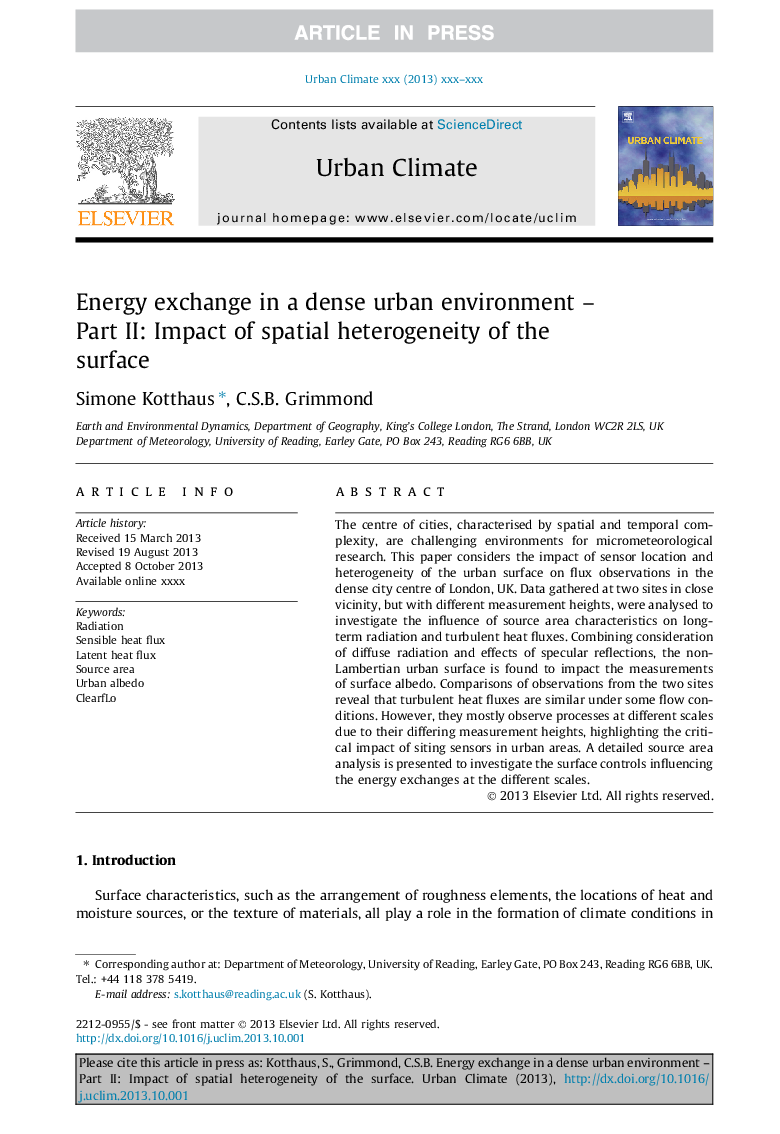| Article ID | Journal | Published Year | Pages | File Type |
|---|---|---|---|---|
| 10260292 | Urban Climate | 2014 | 27 Pages |
Abstract
The centre of cities, characterised by spatial and temporal complexity, are challenging environments for micrometeorological research. This paper considers the impact of sensor location and heterogeneity of the urban surface on flux observations in the dense city centre of London, UK. Data gathered at two sites in close vicinity, but with different measurement heights, were analysed to investigate the influence of source area characteristics on long-term radiation and turbulent heat fluxes. Combining consideration of diffuse radiation and effects of specular reflections, the non-Lambertian urban surface is found to impact the measurements of surface albedo. Comparisons of observations from the two sites reveal that turbulent heat fluxes are similar under some flow conditions. However, they mostly observe processes at different scales due to their differing measurement heights, highlighting the critical impact of siting sensors in urban areas. A detailed source area analysis is presented to investigate the surface controls influencing the energy exchanges at the different scales.
Related Topics
Physical Sciences and Engineering
Earth and Planetary Sciences
Earth and Planetary Sciences (General)
Authors
Simone Kotthaus, C.S.B. Grimmond,
